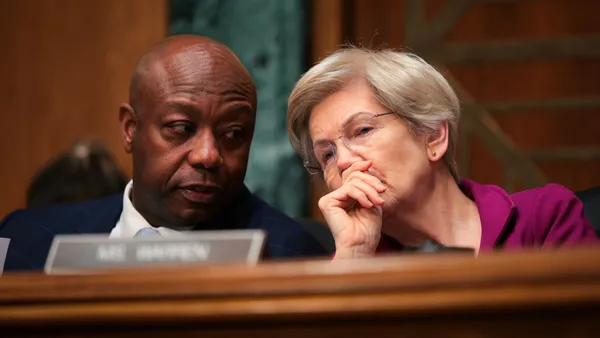Dive Brief:
- State spending on higher education is on track to rise 6.6% to $112.3 billion in fiscal 2023, according to an early look at state support for the sector.
- The spending measure, from an annual survey called Grapevine, includes tax appropriations, nontax support like lottery revenue, nonappropriated support and returns from state-funded endowments for higher ed. Add in federal COVID-19 relief funding routed through the states, and support for higher education totaled $113.5 billion in 2023. That only represents a 5.3% increase from the prior year, as federal relief funding for higher ed is tapering off.
- Grapevine data isn't adjusted for inflation, a notable caveat amid sharply rising costs. The Consumer Price Index spiked by 6.5% between December 2021 and December 2022. The Higher Education Price Index, a metric specifically designed to gauge cost increases that colleges face, similarly jumped 5.2% in fiscal 2022 — the first time it exceeded 5% since 2008.
Dive Insight:
Grapevine data is often later amended — last year the survey projected an 8.5% year-over-year increase that was later revised downward to 7.5%. But it still offers valuable insight as an early snapshot of the latest developments in public funding for higher ed.
The State Higher Education Executive Officers Association and Center for the Study of Education Policy at Illinois State University publish the Grapevine survey each winter. This year's data was collected from October 2022 to January 2023.
The data follows states' fiscal years, which mostly run from the beginning of July to the end of June. Alabama, Michigan, New York and Texas run on slightly different fiscal years.
Fiscal 2023 is projected to be just the second time state fiscal support for higher ed tops $100 billion. The first time was the previous year. Over the last five years, state support has increased by a cumulative 27.5%.
Between 2022 and 2023, a total of 38 states increased state and federal relief funding for higher ed. Washington, D.C. saw funding levels decline, as did 12 states: Connecticut, Delaware, Georgia, Illinois, Michigan, Minnesota, New Hampshire, North Dakota, Texas, Vermont, West Virginia and Wisconsin.
In the majority of those 12 states, funding decreased because both federal relief dollars and state support slipped. But Delaware, Georgia, Vermont, West Virginia and Wisconsin saw large enough declines in federal stimulus funding that they more than offset increases in state support.
About half of state support, $56 billion, went to four-year public college operations. Another 22.1%, or $24 billion, was allocated to two-year public college operations.
State-level student financial aid drew 13.2% of state support, or $14.8 billion. Research, agricultural extensions, hospital extensions and medical schools received 11.4%, or $12.8 billion. The remaining 3.4%, or $3.8 billion, went to other uses like agency funding and funding for private institutions' operations.
Just two states — Connecticut and Wyoming — reported lower state support in 2023 than in 2021, when federal relief funding wasn't counted. Similarly, only Alaska and Wyoming had lower state support in 2023 than in 2018.
"While multiple-year declines in any state should be of concern, these state counts are relatively low compared to pre-pandemic years," said a news release on the new data.
Not including capital funding, states allocated a total of $8.8 billion in federal relief dollars to higher education from the 2020 to 2023 fiscal years. Factoring in funding for capital projects, the federal sum rises to $10.9 billion.














